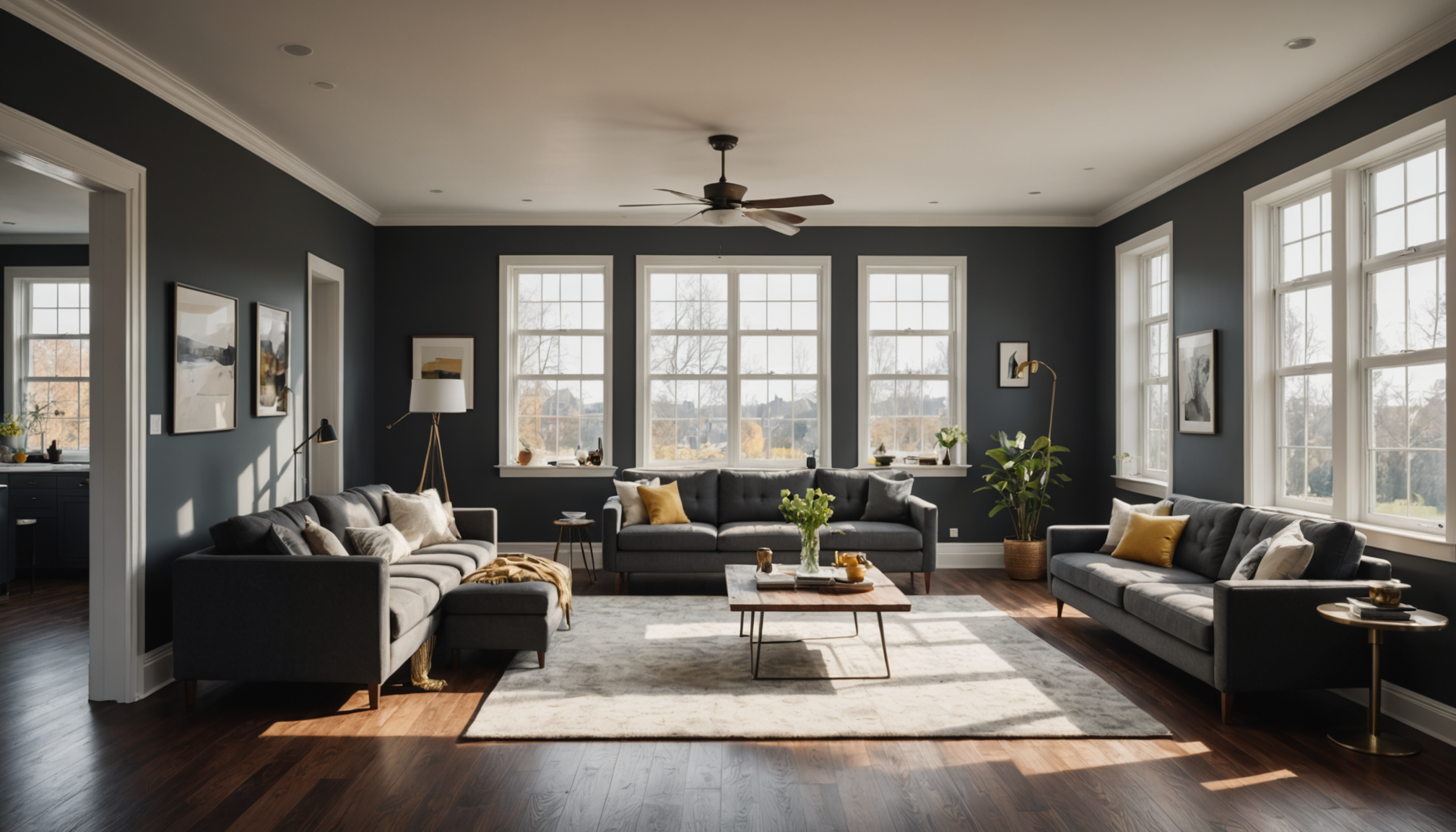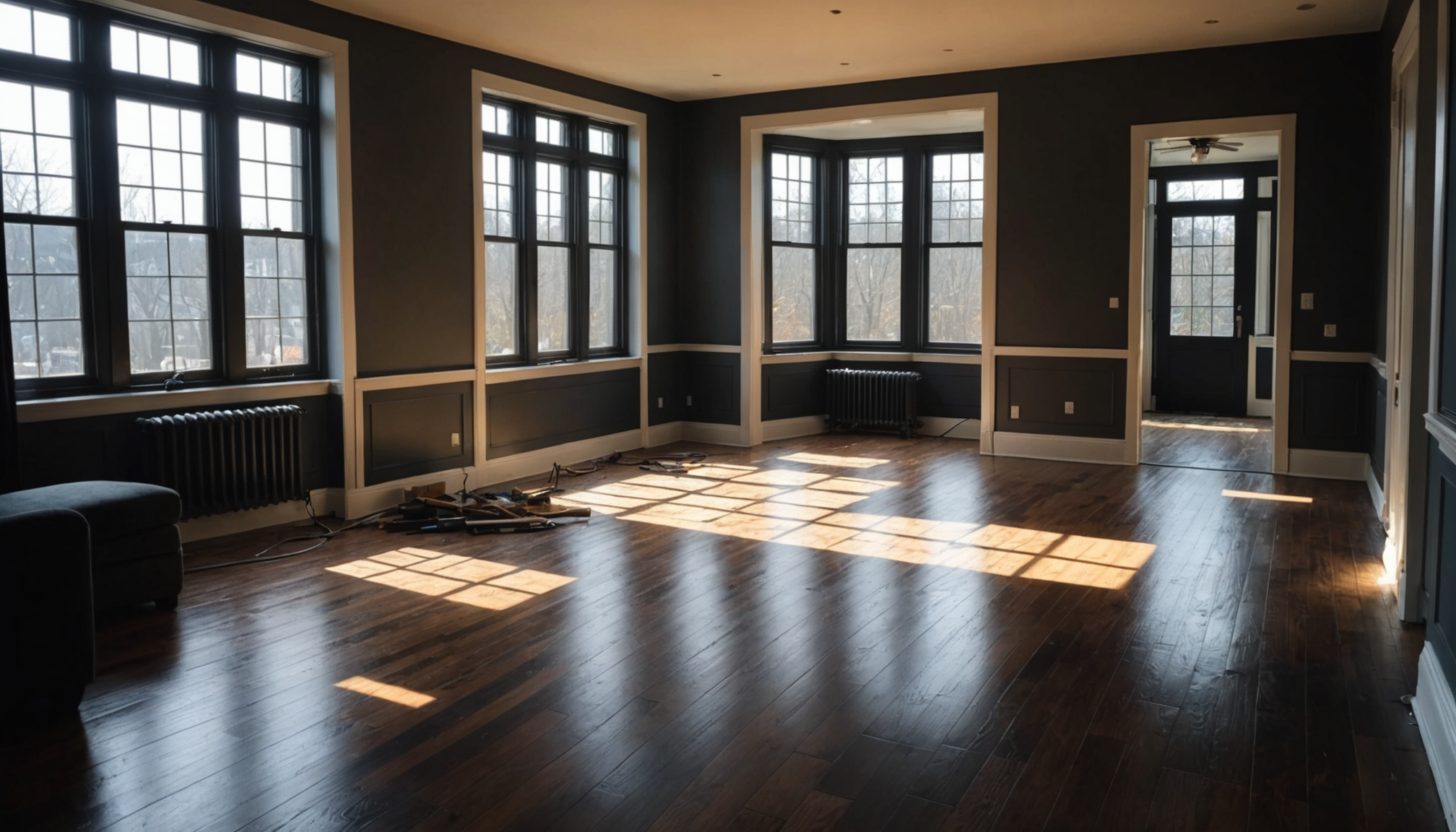Transforming a living room through remodeling is an exciting endeavor, allowing homeowners to rejuvenate their space and increase the overall value of their home. However, understanding the factors that influence renovation costs is crucial for planning and executing a successful project. Various elements can significantly impact the budget, from material selection to room size, and knowing these can help homeowners make informed decisions to control spending and achieve desired outcomes.
One primary factor affecting remodeling costs is the size of the living room. Unsurprisingly, larger rooms require more materials, labor, and time, leading to higher expenses. However, even small spaces can incur substantial costs if the project involves structural changes or extensive customization.
Material selection also plays a pivotal role in determining the cost of a living room renovation. The choice between standard and high-end materials can cause substantial variations in expenses. For instance, while laminate flooring is a budget-friendly option, opting for natural hardwood or luxury vinyl can double or triple material costs. Additionally, the selection of furniture, lighting fixtures, and finishes like paint and wallpaper can influence the overall expenditure.
Labor costs are another significant consideration, as they account for a considerable portion of the budget. Hiring professional contractors can provide the expertise required to ensure quality and adherence to building codes, but at a cost. According to the National Association of Home Builders, labor costs can constitute 30% to 50% of the project budget, depending on the complexity of the work required.
The scope of the renovation is inherently tied to the potential costs. Projects that involve structural changes, such as removing or adding walls, altering electrical layouts, or changing plumbing systems, tend to be more expensive due to the need for skilled tradespeople and the potential requirement of permits. In contrast, cosmetic upgrades such as repainting, refinishing surfaces, or updating furnishings are typically less costly, yet they can still offer a significant aesthetic impact.
Another factor influencing remodeling costs is geographic location. Market rates for materials and labor can vary greatly depending on the region, often reflecting the local cost of living and availability of skilled contractors. Homeowners in metropolitan areas might experience higher prices compared to those in rural settings, highlighting the importance of obtaining local estimates when budgeting for a remodeling project.
Weather conditions can also play a more subtle role in renovation costs, particularly if external factors such as temperature and humidity affect material performance or if projects are prone to seasonal demand fluctuations. For instance, undertakings planned during peak construction months might face increased labor charges due to higher demand for services.
Understanding the distinct variables that influence living room renovation costs can help homeowners manage their budgets effectively. By considering factors such as room size, material choice, labor, project scope, and location, individuals can better anticipate expenses and make strategic decisions that align with their financial capabilities while achieving the aesthetic and functional goals for their living space.
budgeting your living room remodel
Ensuring that your living room remodel stays within budget requires careful planning and detailed financial tracking. Begin by setting a clear and realistic budget that accounts for all expected expenses and includes a buffer for unexpected costs. Determine a maximum amount that you’re willing to spend and prioritize projects and materials based on importance. This helps manage the scale of your renovation while accommodating both essential upgrades and desired luxuries.
Start by listing all components you plan to remodel, such as flooring, painting, lighting, and furniture. Research average costs for these items, factoring in both low and high-end options. This will give you a comprehensive view of possible expenses. Keep in mind that labor often comprises a significant portion of the budget, so allocate funds accordingly if you plan to hire professionals. Even if you decide to tackle some projects on your own, consider the time investment and potential for additional costs from unforeseen issues.
Also, it’s beneficial to keep track of all expenses using a spreadsheet or budgeting app, which allows you to monitor progress and adjust spending as needed. Make sure to differentiate between fixed costs, such as contractor fees, and variable costs like materials, so you can reallocate funds if necessary.
Shopping around for deals on materials can further stretch your budget. Compare prices from various suppliers and look for discount sales or clearance items to reduce costs without compromising on quality. Additionally, consider alternative financing options if the budget needs a boost, like home equity loans for significant remodeling projects. However, always ensure that any loan payments remain manageable within your financial situation.
- Establish a comprehensive budget with a contingency fund for unexpected expenses.
- Prioritize remodeling components and research the cost of materials to get a realistic estimate.
- Monitor expenses carefully using tools like spreadsheets to stay on track.
- Seek out discounts or sales to obtain quality materials at reduced costs.
- Consider financing options cautiously if additional funds are needed, ensuring repayments are feasible.
popular living room upgrades
When it comes to revitalizing your living room, pinpointing popular upgrades is an integral step in enhancing both the aesthetic and functional aspects of your space. Several trends consistently stand out for their potential to transform this central gathering area into a more inviting and stylish environment, without necessarily breaking the bank.
One popular upgrade is the installation of a new flooring system. Flooring sets the overall tone of any room and is one of the first elements people notice when they enter your home. Homeowners frequently gravitate towards hardwood or high-quality laminate, which can add warmth and elegance to the living space. However, if budget constraints are a concern, cheaper alternatives like luxury vinyl tile offer durability and an appealing appearance at a lower cost. Regardless of the material chosen, investing in quality flooring can significantly boost both your home interior’s appeal and its resale value.
Lighting is another vital factor in a living room makeover. Swapping out outdated or inadequate light fixtures for ones that allow you to control both the intensity and temperature of light can drastically change the ambiance. Consider layering different types of lighting—ambient, task, and accent—to create a versatile environment that adapts to various activities and moods. Incorporating energy-efficient LED lights is not only environmentally friendly but also a long-term cost-saving measure.
Adding or upgrading storage solutions can align with both form and function. Built-in shelves, stylish cabinets, and multifunctional furniture with hidden storage can declutter the space and offer a polished look. These improvements ensure your living room remains organized while providing a chance to showcase decorative items or share personal stories through curated displays.
Incorporating new color schemes or patterns can offer a fresh take on your living space’s design. This can involve repainting walls, applying contemporary wallpaper, or reupholstering furniture. Choosing colors that complement your existing elements or introducing a bold accent wall can breathe new life into your home interior. Colors not only affect the room’s aesthetic but can also influence the atmosphere—serene blues or greens can create relaxation, while warm reds or oranges can energize the space.
Furniture upgrades can define the style and comfort of your living room. Selecting modern, comfortable seating arrangements that accommodate your lifestyle—whether it’s an oversized couch for family movie nights or sleek, minimalist pieces for a chic look—ensures the room is both functional and inviting. Complementary coffee tables, armchairs, and rugs can also unify the design, offering both practicality and distinctive character.
Lastly, technology integration is increasingly prevalent in modern living room upgrades. Installing smart home systems that control lighting, sound, and temperature can enhance comfort and convenience. Televisions with smart capabilities and integrated sound systems also bring entertainment to the forefront, making the living room a hub for leisure and social gatherings.
By focusing on these popular living room upgrades, you can maximize your renovation costs, ensuring each dollar spent enhances both the allure and usability of your home interior.
hiring professionals vs. DIY
Choosing between hiring professionals and attempting a DIY living room remodel is a crucial decision that can significantly impact your renovation costs, timeline, and the overall outcome of your home interior project. Each approach has its distinct advantages and challenges, and considering these factors will help you make the right choice for your situation.
When you hire professionals, you benefit from their expertise, experience, and ability to deliver high-quality results. Skilled contractors can manage all phases of the remodel, from design and permitting to execution and final touches. This often leads to a smoother process with fewer disruptions and mistakes, ensuring projects remain within the planned timeframe and adhere to building codes. Additionally, professionals carry insurance, which provides a level of protection against potential damages or accidents during the renovation. However, these benefits come at a cost. Contractor fees can constitute a significant portion of your budget, sometimes making up 30% to 50% of the overall renovation costs, depending on the complexity of the work involved.
On the other hand, a DIY approach might offer more control over expenses as you can select exactly where and how much to invest. This route often appeals to homeowners looking to save on labor costs and who enjoy hands-on projects. You have the flexibility to progress at your own pace, and with the vast array of online tutorials and how-to guides, many home improvements are more accessible than ever. Nevertheless, DIY projects require a thorough understanding of your capabilities and available time. The absence of professional experience can lead to errors, which might end up costing more in the long run to fix than hiring an expert from the start.
Ultimately, the decision to go with professionals or embrace a DIY approach should align with your personal skills, financial resources, and the scope of the project. If you’re considering extensive renovations involving structural changes, complicated electrical work, or plumbing, hiring experts is often the wiser choice. For less intensive updates, such as painting, installing new lighting fixtures, or laying down new carpet, DIY might be both feasible and financially advantageous.
To strike a balance, consider a hybrid approach. This involves hiring professionals for more complex tasks while undertaking simpler projects yourself. By doing so, you can leverage professional expertise where it’s most needed while still maintaining some control over your budget through personal involvement.
In summary, whether it’s managing the timeline or ensuring high craftsmanship, carefully weigh the pros and cons of each method. Trust yourself to make the best decision for your home’s needs—a choice that aligns with your vision and makes the most out of your renovation investment. With motivation, creativity, and smart planning, you have the power to transform your living room into a space that enhances both the functionality and the aesthetic value of your home interior.
maximizing your investment
- How can I ensure my living room remodel adds value to my home?
- Focus on making upgrades that are both aesthetically pleasing and functional. Consider improvements like quality flooring, updated lighting, and smart home technology that appeal to future buyers and enhance your home interior’s usability.
- What are the smartest investments when remodeling a living room on a budget?
- Smart investments include repainting with fresh, modern colors, upgrading lighting to energy-efficient options, and choosing versatile furniture that maximizes space. These changes are cost-effective and can improve your living room’s appeal significantly.
- Should I prioritize aesthetics or functionality during a living room renovation?
- Ideally, a successful renovation blends both aesthetics and functionality. Aim for a cohesive design that looks inviting while ensuring the space meets your lifestyle needs, like ample seating or sufficient storage.
- How do I decide between trendy and timeless design elements for my living room?
- Balance is key when choosing design elements. Opt for timeless features on major components like flooring and furniture, and incorporate trends through easily changeable accents like pillows or paint to keep the room current without frequent overhauls.
- What common mistakes should I avoid to maximize my investment in a living room renovation?
- Avoid over-customization that might not appeal to future buyers and steer clear of exceeding the budget without added value. Ensuring quality over quantity and validating choices for practicality can prevent costly errors.











